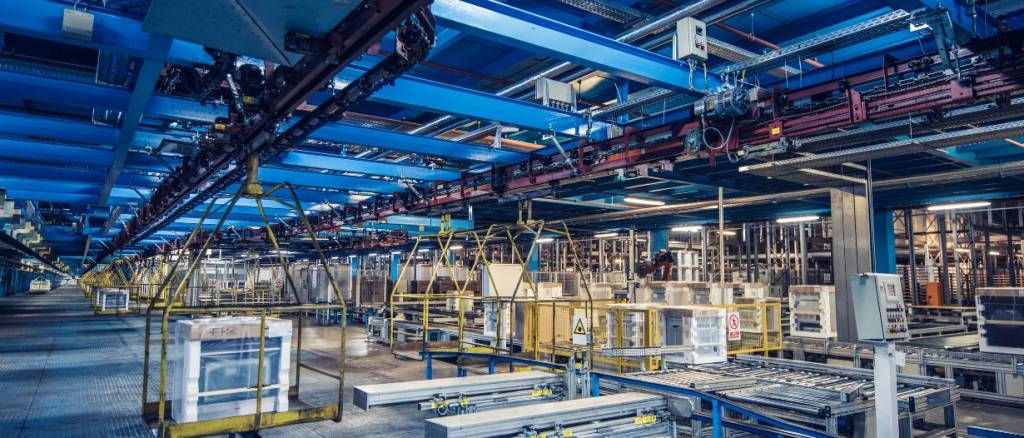US manufacturing experienced a further decline in June, reaching levels not seen since the initial wave of the COVID-19 pandemic. However, there is a positive aspect as price pressures at the factory gate continued to decrease, providing a silver lining for the economy.
According to the survey conducted by the Institute for Supply Management (ISM) on Monday, shrinking activity in factories led to layoffs. Timothy Fiore, the Chair of the ISM Manufacturing Business Survey Committee, described this trend as more significant than in previous months.
While the ISM survey suggests an economy in recession, other concrete indicators such as nonfarm payrolls, first-time unemployment benefit applications, and housing starts show that the economy is still moving forward, albeit slowly.
Nevertheless, the risks of a downturn have increased due to businesses and consumers grappling with a 500 basis points rise in interest rates since March 2022. This increase in interest rates by the Federal Reserve represents the fastest tightening of monetary policy in over four decades.
Andrew Hunter, the deputy chief US economist at Capital Economics, stated “This provides further reason to suspect that a recession is on the horizon. The ISM survey adds to the evidence that core goods prices will start falling again soon.”
The ISM’s manufacturing Purchasing Managers’ Index (PMI) dropped to 46.0 last month, the lowest reading since May 2020, down from 46.9 in May. This marks the eighth consecutive month that the PMI has remained below the 50 threshold, indicating a contraction in manufacturing. It is the longest such period since the Great Recession.
Economists surveyed by Reuters had expected the index to rise slightly to 47.
Manufacturing, which contributes 11.1% to the economy, contracted at an annualised rate of 5.3% in the first quarter, as revealed by government data last week.
Despite the overall decline, some sectors continue to exhibit strength, particularly transportation equipment, which is experiencing solid demand. However, even in this sector, manufacturers express concerns about a potential decrease in sales in the second quarter, leading to higher inventory levels. They project that total sales by the end of the year will be similar to last year’s figures.
Apart from high borrowing costs, manufacturing is also affected by a shift in consumer spending from goods to services, which are typically purchased on credit. Furthermore, businesses are cautiously managing inventories in anticipation of weak demand.
Economists believe that the manufacturing sector has yet to experience the full impact of the credit tightening following the financial market turmoil earlier this year.
In addition to transportation equipment, sectors such as printing, nonmetallic mineral products, and primary metals showed growth in June. However, there were 11 industry groups, including wood products, textile mills, electrical equipment, appliances and components, machinery, and computer and electronic products, that experienced contraction.

Manufacturers in the computer and electronic products industry reported that customers are less inclined to make advanced purchases. The food, beverage, and tobacco products sector noted an elevated level of capital project review, while machinery manufacturers stated that orders and business are steady but prospective orders seem to be delayed until 2024.
Weak demand is putting downward pressure on input prices. The survey’s measure of prices paid by manufacturers fell from 44.2 in May to 41.8 in June, as supply chain bottlenecks eased significantly and higher borrowing costs dampened demand.
Supplier delivery performance to manufacturing organisations has improved for nine consecutive months, leading to disinflation in goods. However, inflation remains a concern in the services sector due to stronger wage growth resulting from a tight labour market and higher housing rents.
The survey’s gauge of factory employment declined from 51.4 in May to 48.1. While it is not a reliable predictor of manufacturing employment in the government’s nonfarm payrolls count, it aligns with expectations of slower hiring by the end of the year.
On Friday, the government is expected to report an increase of 225,000 jobs in June, following a rise of 339,000 in May, according to economists surveyed by Reuters.
While manufacturing is deteriorating, the housing sector appears to be recovering due to a shortage of homes for sale. A separate report from the Commerce Department showed a 2.2% increase in spending on residential construction in May, following a 0.9% decrease in the previous month. Investment in single-family housing projects accelerated by 1.7%.
This boost in residential construction spending contributed to an overall increase of 0.9% in construction spending in May, following a 0.4% gain in April.
José Torres, a senior economist at Interactive Brokers in Miami said, “The residential segment has benefited from renewed demand while the inventory of existing homes for sale has remained low because homeowners have little incentive to sell in a weaker real estate market while assuming larger mortgage payments.”






















